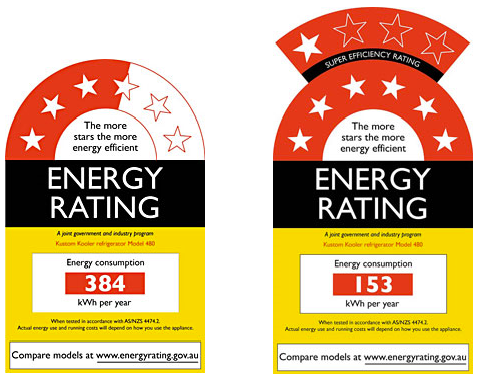KEY POINTS
- Your power bill could be higher because of an increase in energy usage or factors related to your energy plan.
- Factors that can cause your energy bill to increase include using your appliances more, using a larger number of appliances, using older appliances or having more people in your home.
- Your energy plan’s expiry or a change in electricity rates (if you’re on a variable rate plan) could explain why your energy bills have risen.
On this page:
Reasons why your electricity bill is so high
There are a handful of reasons why your latest electricity bill could be so high compared to your previous one, but these can be divided into two categories:
- Increase in actual energy use
- Problems with your billing or energy plan
Increase in actual energy use
1. Air conditioners and/or heaters
According to the Department for Energy and Mining and NSW Climate Action, heating and cooling appliances are responsible for up to 50% of household energy use.
The inefficiency of running an air conditioner for too long or operating it in a non-insulated or large area will increase energy bills.
During scorching summer temperatures and icy winter chills, an increase in their use to stay frosty or warm is unsurprising.
Solution:
There are novel ways to utilise your air-conditioning or heating effectively and reduce your reliance upon it:
- Set your air conditioner or heating temperature control to 22-24˚C in summer and 19-21˚C in winter. Setting the temperature incorrectly will result in an increased cost of 5-10% for every extra degree used.
- Reverse-cycle air conditioners are the most energy-efficient type of heating/cooling. However, households have different warming or cooling needs, so we recommend doing your research.
- If you live in a hot and dry climate, consider using an evaporative cooler, which is a more energy-efficient alternative.
- In summer, using a fan in conjunction with your air-conditioning to circulate cool air instead of lowering the temperature can help reduce energy usage by up to 70%.
- Most modern ceiling fans have a winter or summer mode that will change the direction that air flows.
- Setting a timer for air-conditioner usage and sealing doors, windows and unused areas keeps running costs down.
2. Heating water
Hot water use can account for over 23% of energy usage in an Australian home, according to the Australian Government’s YourHome website.
Between the kitchen, laundry and bathroom, hot water systems in the home require a lot of energy.
An increase in hot water use is quite common if your area is experiencing a prolonged winter snap.
Solution:
- Install low-flow taps and shower heads.
- Install a continuous flow hot water system (also known as instant hot water systems), which is more energy-efficient with lower ongoing bill costs.
- If you already have rooftop solar installed, installing a solar hot water system or solar diverter could help you save more money by using solar energy to heat your water.
- If you’re using an old hot water system, install a hot water system timer to control when your system turns on and off.
- Take shorter showers.
- Wash clothes in cold water.
- Use the eco setting on the washing machine and dishwasher.
- Have mixer taps in ‘cold’ position.
- Check the hot water system for leaks.
3. Older appliances
Older appliances don’t have the same energy-saving features as their modern-day counterparts, with a higher power rating or wattage (the average amount of energy an appliance consumes).
As they age, the performance of older appliances begins to dwindle more. For example, the wear of an air conditioner’s compressor can increase its energy use, as it struggles to maintain a consistent temperature.
Solution:
Replacing old hardware with energy-efficient appliances is one of the most effective ways to avoid high electricity bills.
Today, energy-efficient appliances come attached with an Energy Star Rating label, rating appliances based on their energy efficiency and providing an estimated annual energy consumption (e.g. 4800kWh).
Here’s how to read an Energy Star Rating label:
Image source: energyrating.gov.au
- Stars: The more stars, the more energy-efficient an appliance is.
- Energy use: Under the ‘Energy Consumption’ section, you’ll find an estimated annual energy consumption of the rated appliance. The lower it is, the more money you’ll save on your energy bills.
Keep in mind that energy-efficient appliances will cost more to purchase upfront. However, you’re likely to save more from the reduction in future power bills over the appliance’s lifespan.
4. Using more appliances
Conversely, if you’ve recently bought a brand new appliance (i.e. freezer) on top of what you’re already using at home, your subsequent bills will reflect its use.
Its impact on your energy bills depends on its power rating and your frequency of use.
Solution:
Be mindful and moderate your usage habits. Only switch it on or run it when you have to. This will depend on the type of appliance you’ve purchased.
5. Standby appliances
Standby power consumption, or a ‘phantom load’, is a silent energy consumer. While these devices don’t consume a lot of energy on their own, adding multiple phantom loads could result in a larger electricity bill.
Solution:
- Turn phantom load appliances completely off — this typically includes appliances such as entertainment consoles (i.e. PlayStation 5, Xbox).
- Install a smart power board. The smart power board can cut electricity to a certain device when it senses that it’s in standby mode, but will leave active devices on.
6. Being at home or having more people over
If you find yourself at home more often, be it working from home or the long summer holiday, you’re going to be using more energy.
The same rule applies if you have a new roommate or visitor living under your roof, with an increased energy consumption across the board.
Solution:
- If you’re at home more during peak times and you’re on a time of use (ToU) tariff, consider switching to a single rate tariff.
- Conversely, if you’re at home more during off-peak times, you’ll pay less on a ToU tariff.
- Work off-site such as at a cafe to minimise your home energy consumption.
- Spend more time at a mall during summer or winter.
Billing and plan-related factors
1. Your plan’s rates may have changed
Most energy plans in the market are ‘variable rate’, meaning your providers can change the usage and supply rates on your plan at any time.
However, they are legally required to give you written notice of at least five working days.
If you were suddenly hit with a large energy bill, your plan’s rates may have unknowingly increased.
Solution:
- Check your inbox or mailbox to see if you’ve been correctly notified of any rate hikes.
- If you haven’t been correctly notified, contact your state’s Energy Ombudsman for assistance.
- If you’ve been correctly notified, it may be time to start shopping around for a cheaper energy plan on Canstar Blue’s energy comparison tool. Customers can also compare current electricity, gas and solar plans to see what the cheapest and best value plans are on the energy market.
2. Your plan has expired
If it has been more than 12 months since you’ve switched energy plans, your original energy plan has most likely expired. In this situation, your retailer will automatically roll you over onto their standing offer.
Standing offers have rates governed by the Australian Energy Regulator (AER), preventing customers from overpaying for energy. However, they generally reflect the maximum price you can be charged by a provider.
Your plan’s sudden expiry could explain the sudden bill rise.
Solution:
Like the previous section, we recommend shopping for a cheaper energy plan on Canstar Blue’s comparison tool.
3. Estimated meter readings
To bill customers accurately, energy distributors (not to be confused with retailers) have dedicated meter readers to collect your meter’s usage data.
For houses with smart meters, usage data is transmitted digitally. For customers with other meter types, the meter reader will physically visit your home to take a reading.
However, there are cases where an accurate reading doesn’t take place, with customers receiving an estimated energy usage instead. A bill estimate is indicated by an ‘E’ next to the meter reading.
The reasons include:
- Smart meters: If your smart meter fails to transmit your usage data due to hardware or communication failures.
- Other meter types: If the meter reader can’t access your meter safely.
If your recent bill was based on an estimate, you could be paying more than you actually should to keep the lights on.
Solution:
- If you have a smart meter that’s malfunctioning, contact your provider to organise a repair or replacement.
- If you have other meter types, make sure that your meter is safely accessible before the next scheduled bill read, which can be found on your latest bill.
- Once the problems with your meter are fixed, you can conduct and submit your own bill read online or by mail (depending on the provider) or reschedule for another bill read. If you were overcharged on your latest bill from an over-estimation, you’re likely to receive a bill credit.
4. Electricity concessions not applied
Customers who are anticipating an electricity concession on their recent bill should always check that the concession has been applied to the final amount.
Solution:
- If a credit or concession has not been applied, customers need to contact their energy provider and bring it to their attention.
- Aussies living in an apartment or residential complex within an embedded network may also be eligible for federal or state concessions, depending on the conditions of each program.
5. Faulty rooftop solar
If you have rooftop solar, you’re probably on a solar feed-in tariff (FiT). A solar FiT is a bill credit you receive for every kilowatt hour (kWh) of excess solar exported back to the grid.
If your rooftop solar isn’t functioning as intended, how much excess solar you’re exporting may be declining. In turn, the bill credits you’re entitled to will start dropping, causing your energy bills to steadily rise.
Solution:
- Make sure your solar panels are cleaned and frequently maintained by a professional solar installer.
- If you have a smart meter, you could download your provider’s app to monitor your solar panel’s energy generation. If not, consider installing an electricity usage monitor.
Compare cheaper energy deals
The Canstar Blue table below shows some of the cheapest energy deals in NSW, QLD, SA and VIC. If you have the name of the energy plan you are on, you can search its usage rates and compare it with some of the cheapest on the market. This could help you find out if the energy rate you are paying is why your electricity bill is so high.
Here are some of the cheapest published deals from the retailers on our database that include a link to the retailer’s website for further details. These are products from referral partners†. These costs are based on the Ausgrid network in Sydney but prices may vary depending on your circumstances. This comparison assumes general energy usage of 3900kWh/year for a residential customer on a single rate tariff. Please use our comparison tool for a specific comparison in your area. Our database may not cover all deals in your area. As always, check all details of any plan directly with the retailer before making a purchase decision.
Here are some of the cheapest published deals from the retailers on our database that include a link to the retailer’s website for further details. These are products from referral partners†. These costs are based on the Citipower network in Melbourne but prices may vary depending on your circumstances. This comparison assumes general energy usage of 4000kWh/year for a residential customer on a single rate tariff. Please use our comparison tool for a specific comparison in your area. Our database may not cover all deals in your area. As always, check all details of any plan directly with the retailer before making a purchase decision.
Here are some of the cheapest published deals from the retailers on our database that include a link to the retailer’s website for further details. These are products from referral partners†. These costs are based on the Energex network in Brisbane but prices may vary depending on your circumstances. This comparison assumes general energy usage of 4600kWh/year for a residential customer on a single rate tariff. Please use our comparison tool for a specific comparison in your area. Our database may not cover all deals in your area. As always, check all details of any plan directly with the retailer before making a purchase decision.
Here are some of the cheapest published deals from the retailers on our database that include a link to the retailer’s website for further details. These are products from referral partners†. These costs are based on the SA Power network in Adelaide but prices may vary depending on your circumstances. This comparison assumes general energy usage of 4000kWh/year for a residential customer on a single rate tariff. Please use our comparison tool for a specific comparison in your area. Our database may not cover all deals in your area. As always, check all details of any plan directly with the retailer before making a purchase decision.
What can I do to make sure my electricity bill isn’t so high?
If you are wondering why your electricity bill is so high, consider what has been different during your payment cycle.
If you need help managing your electricity usage, there are plenty of energy-saving products that help monitor energy usage and reduce standby usage.
If all else fails, give your energy provider a call and ask them if there has been a change to usage rates or if you’ve lost a particular discount for some reason – if you’ve tried this with no luck, then perhaps it’s time to compare energy providers and consider a switch.




Share this article